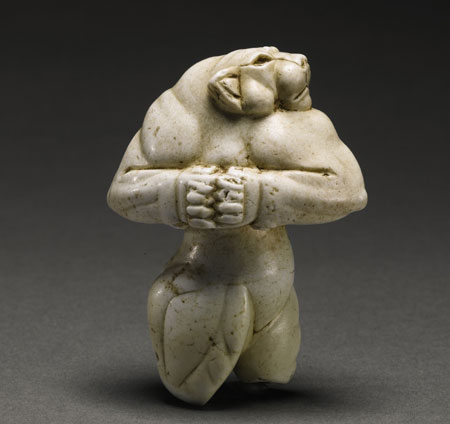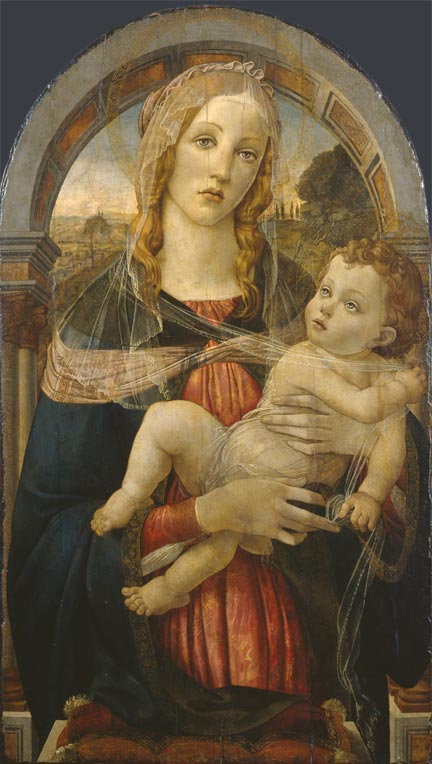On 4 Oct, 2010 With
Visual Arts Salaries With the world wide crisis we are all experiencing, finding a stable job is a little bit difficult. With many competitors around, you must really have the right skills and knowledge to be on the edge against others. With technology leading the way, there is a very large demand for visual artists in different sub fields and positions. Visual arts mainly focus on everything visual like drawing, painting, and photography. If you have the passion for the visual arts, then by now you should enroll yourself to an art school and get a degree in any field of visual arts which you think suits you well. There are many good schools available that specialize in arts; you just…
Read More
On 4 Oct, 2010 With
Average weekly income for a visual artist: £521 (average figure based on highest and lowest earnings. Source: ONS). Amount paid for works sold at the annual Affordable Art Fair in London: £50–£3,000 (of which a percentage may go to an artist’s gallery). How does the average artist make a living? If you’re Damien Hirst, of course, you need only flog a couple of sharks in formaldehyde; if you’re Tracey Emin, an unmade bed will do. If you’re an actor, a well-publicised turn as Hamlet and near-omnipresence in the Christmas TV schedules, a la David Tennant, would keep the accountant happy. But none of these scenarios will ring true for the average artist – who is more likely to be stacking supermarket shelves,…
Read More
On 4 Oct, 2010 With
Young British Artists Young British Artists or YBAs (also referred to as Brit artists and Britart) is the name given to a group of conceptual artists, painters, sculptors and installation artists based in the United Kingdom, most (though not all) of whom attended Goldsmiths College in London. The term Young British Artists is derived from shows of that name staged at the Saatchi Gallery from 1992 onwards, which brought the artists to fame. It has become a historic term, as most of the YBAs are now in their forties. They are noted for “shock tactics”, use of throwaway materials and wild-living, and are (or were) associated with the Hoxton area of East London. They achieved considerable media coverage and dominated British art during the 1990s. Leading artists of the group…
Read More
On 3 Oct, 2010 With
Street art is any art developed in public spaces — that is, “in the streets” — though the term usually refers to unsanctioned art, as opposed to government sponsored initiatives. The term can include traditional graffiti artwork, stencil graffiti, sticker art, wheatpasting and street poster art, video projection, art intervention, guerrilla art, flash mobbing and street installations. Typically, the term street art or the more specificpost-graffiti is used to distinguish contemporary public-space artwork from territorial graffiti, vandalism, and corporate art. Artists have challenged art by situating it in non-art contexts. ‘Street’ artists do not aspire to change the definition of an artwork, but rather to question the existing environment with its own language. They attempt to have their work communicate with everyday people about socially relevant themes in ways that are informed by…
Read More
On 2 Oct, 2010 With
Peredvizhniki (Russian pronounced as Pear-rad-veezh-niki, often calledThe Wanderers or The Itinerants in English, were a group of Russian realist artists who in protest at academic restrictions formed an artists’ cooperative which evolved into the Society for Traveling Art Exhibitionsin 1870. History The society formed in 1870 in St. Petersburg under Ivan Kramskoi, Grigoriy Myasoyedov, Nikolai Ge and Vasily Perov’s initiative during a struggle of the avant-garde art forces of the country for democratic ideals, and in a counterbalance to the official center of art—the St.Petersburg Academy of Arts. The society developed the best traditions of the Artel of Artists headed by Kramskoi, who became the leader of the new association. Peredvizhniki were influenced by the public and aesthetic views of Vissarion Belinsky and Nikolai Chernyshevsky. Like most Slavophiles, Chernyshevsky was a liberal and ardently supported…
Read More
On 1 Oct, 2010 With
Concerning his picture of Theodore and Honorio, Fuseli used to say, “Look at it—it is connected with the first patron I ever had.” He then proceeded to relate how Cipriani had undertaken to paint for Horace Walpole a scene from Boccaccio’s Theodore and Honorio, familiar to all in the splendid translation of Dryden, and, after several attempts, finding the subject too heavy for his handling, he said to Walpole, “I cannot please myself with a sketch from this most imaginative of Gothic fictions; but I know one who can do the story justice—a man of great powers, of the name of Fuseli.” “Let me see this painter of yours,” said the other. Fuseli was sent for, and soon satisfied Walpole…
Read More
On 30 Sep, 2010 With
The highest auction price ever achieved by a sculpture 2007: The highest auction price ever achieved by a sculpture: the 5,000-year old Guennol Lioness, a 3 1/4-inch limestone lion from ancient Mesopotamia. Sold for $57 million. Source: visual-arts-cork.com
Read More
On 29 Sep, 2010 With
His rising fame, his poetic feeling, his great knowledge, and his greater confidence, now induced Fuseli to commence an undertaking worthy of the highest genius—the Shakspeare Gallery. An accidental conversation at the table of the nephew of Alderman Boydell, started, as it is said, the idea; and West, Romney, and Hayley shared with Fuseli in the honor. But to the mind of the latter, such a scheme had been long present; it dawned on his fancy in Rome, even as he lay on his back marveling in the Sistine, and he saw in imagination a long and shadowy succession of pictures. He figured to himself a magnificent temple, and filled it, as the illustrious artists of Italy did the Sistine,…
Read More
On 28 Sep, 2010 With
The Macchiaioli were a group of Italian painters from Tuscany, active in the second half of the nineteenth century, who, breaking with the antiquated conventions taught by the Italian academies of art, painted outdoors in order to capture natural light, shade, and colour. The Macchiaioli were forerunners of the Impressionists who, beginning in the 1860s, would pursue similar aims in France. The most notable artists of this movement were Giovanni Fattori, Silvestro Lega and Telemaco Signorini. The movement The movement grew from a small group of artists, many of whom had been revolutionaries in the uprisings of 1848. The artists met at the Caffè Michelangiolo in Florence throughout the 1850s to discuss art and politics. These idealistic young men, dissatisfied with the art of the academies, shared a wish…
Read More
On 27 Sep, 2010 With
Genuine fakes by Ben East Fakes and forgeries were once the embarrassment of the art world. No august gallery, no famous auction house is entirely free from the stain of a costly error of provenance. It was ever thus: one of the first acquisitions by the National Gallery in London was proudly unveiled in 1847 as a major painting by the 16th-century artist Hans Holbein. It was, they said, a purchase of “national significance”. But within weeks, doubt was cast on its authenticity, the attribution to Holbein was scrubbed and the gallery’s first director, Sir Charles Lock, resigned. Two centuries on, you’d forgive Lock a wry smile. Duped galleries and experts can now feel reassured that even if they do…
Read More



